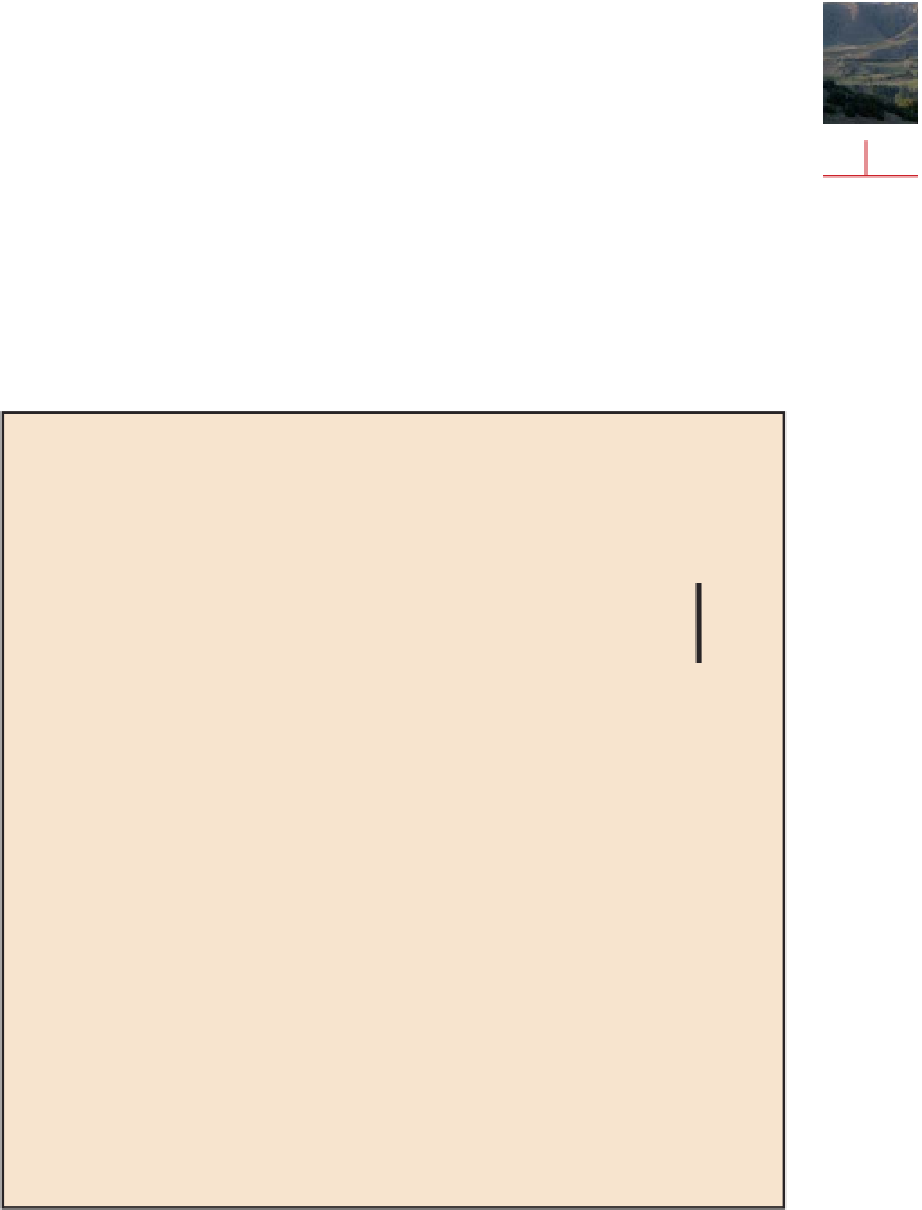Geology Reference
In-Depth Information
Andreas fault zone of California has
experienced countless earthquakes
along its 1200 kilometre length over a
period of several million years, con-
tributing to a total displacement esti-
mated at several hundred kilometres.
energy released by the earthquake
at its source and is reflected in the
severity of the surface vibrations, the
'
earthquake waves'
. The most severe
earthquakes known have a magnitude
of between 8 and 9 on the Richter
scale, whereas the weakest detectable
by humans have a magnitude of about
3.5. Those weaker than this are only
detectable by instruments. Each suc-
cessive number on the Richter scale
represents a factor of ten times more
energy than the last; thus a magnitude
5 earthquake is ten times more severe
than a magnitude 4, and so on.
The damage and loss of life caused
by a major earthquake can be cata-
strophic, as demonstrated by several
notable examples in recent years.
Two contrasting cases are the Haiti
earthquake in January 2010 and the
more recent devastating earthquake
in Japan in March 2011. The mag-
nitude-9 Japanese earthquake was
caused by a deep-seated movement
on the subduction zone along the
5
42
43
Earthquakes
An
earthquake
is a vibration of the
ground caused by a sudden displace-
ment or failure of rock at depth.
The vibrations caused by this event
spread out in all directions from
the source of the disturbance, like
ripples in a pool after a stone has
been thrown in. Earthquakes are
common and very widespread in
occurrence; most are too small to be
detected except by sensitive instru-
ments, but the largest ones cause
immense damage and loss of life.
Approximate
equivalent
magnitude
1-3
Intensity
Characteristic effects
I
Instrumental
detected only by seismograph
II
Feeble
detected only by sensitive people
III
Slight
felt by people at rest, like vibrations from a passing
heavy vehicle
Intensity and magnitude: the 'size' of
an earthquake
The destructive power of an earth-
quake - its
intensity
- depends on the
severity of the ground motion, and
is measured by the effects felt at the
surface. Intensity is usually described
in terms of numbers on the
Mercalli
scale
(Table 5.1) and ranges from
instrumental (detected only by instru-
ments) to catastrophic (total destruc-
tion of all buildings). In populated
areas, it is possible to map zones of
increasing intensity towards a central
position above the source of the
earthquake where the intensity is at
a maximum. This point is termed the
epicentre
. The
magnitude
of an earth-
quake is a more exact way of describ-
ing its size, and is usually measured
on the
Richter scale
(Table 5.1). The
magnitude measures the amount of
4-5
IV Moderate
felt by people walking; rocking of loose objects
Rather strong
felt generally; people awakened; bells ring
V
VI
Strong
trees sway; suspended objects swing; loose objects fall
VII
Very strong
general alarm; walls crack; plaster falls
6-7
VIII
Destructive
drivers disturbed; masonry cracked; chimneys fall;
damage to poorly constructed buildings
IX
Ruinous
some houses collapse; ground cracks; pipes break
X
Disastrous
ground cracks badly; many buildings destroyed;
railway lines bent; landslides on steep ground
XI
Very disastrous
few buildings remain standing; bridges destroyed;
railways, pipes and cables out of action; great
landslides and floods
8+
XII
Catastrophic:
total destruction; objects thrown nto the air; ground
rises and falls in waves
Table 5.1
Characteristic effects of earthquakes of different intensities (Mercalli scale) and the
approximate equivalent magnitudes (Richter scale).










Search WWH ::

Custom Search